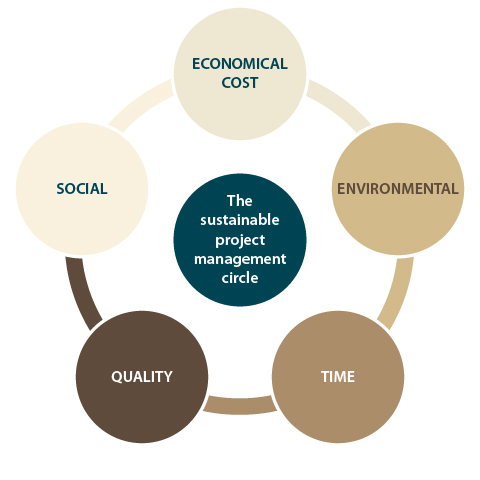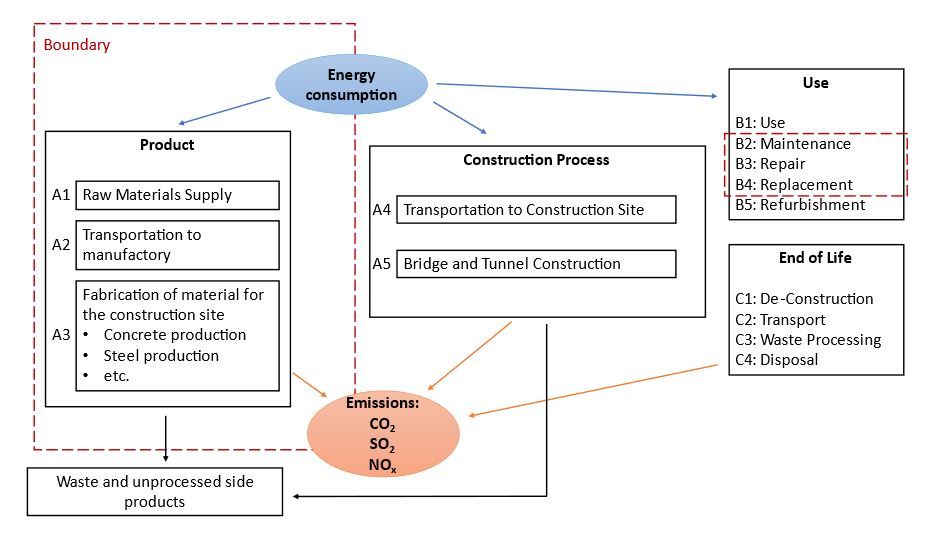Civil systems are constructed for a specific lifetime. For this, structural engineers specify materials that are safe and durable. In the structural calculations, the deterioration is taken into account with the safety factors. But this does not mean that structures can withstand the environmental circumstances for the defined lifetime without any inspections and maintenance. As defined in project management field as the equilateral triangle, it is the goal to find a balance between costs, quality and time. Which is why the goal for the maintenance planning is to reduce the maintenance time without loosing the safety and functionality of the system.
Figure 1 – Change of Mindset: “Project Management Rectangle”
Besides the maintenance planning, a life cycle analysis is undertaken in this project as well. The manufacture and disposal of the material used for civil structures effect our planet’s ecosystem. 11% of the global greenhouse gas emissions are emitted by the structural engineering field. [1] This shows that the project management triangle should actually be transformed to a rectangle which includes the sustainability.
For the life cycle analysis, the focus lays on the Cradle-to-Gate (A1-A3) which defines the production stage. Furthermore, the maintenance and repair are considered for the following anylsis as well. Therefore, the life stages “Construction Process”and “End of Life” as defined in BS EN 158044 are situated outside of the scope since not enough data has been conducted. The embodied carbon emission (CO2) is not the only piece that has an impact on the environment. Emissions of non-CO2 flue gases such as NOx may increase due to the greater throughput of fuel, and toxicity issues may arise due to the use of monoethanolamine (MEA) capture solvent, resulting in ecological and human health impacts. [2]
This information leads us to three further indicators that are chosen for our analysis: energy consumption, sulfur dioxide (SO2) pollution and nitrogen oxides (NOx) emission.
Figure 2 – Definition of Boundaries for the LCA
[1] Gibbons, O.P. and Orr, J.J., 2020. How to calculate embodied carbon, Institution of Structural Engineers.
[2] Sathre, R., Masanet, E., Cain, J. and Chester, M., 2011. The role of Life Cycle Assessment in identifying and reducing environmental impacts of CCS (No. LBNL-4548E). Lawrence Berkeley National Lab.(LBNL), Berkeley, CA (United States).

